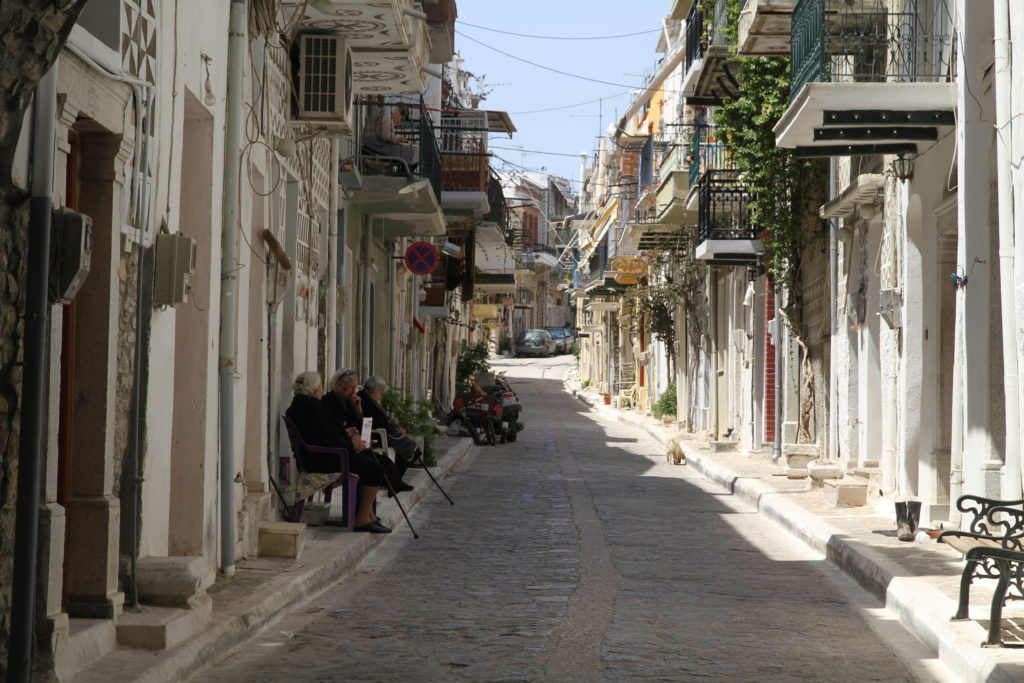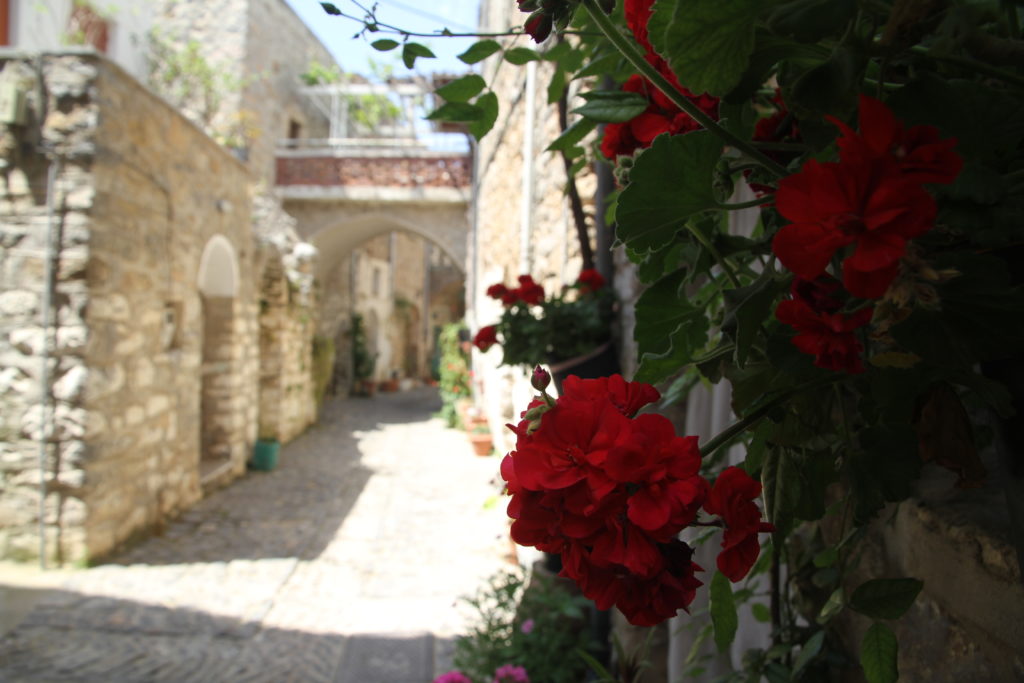Mastic Villages

MASTIC VILLAGES – “MASTIHOHORIA”
The villages comprising Mastihohoria (“mastic -“mastiha” in Greek- villages”) take you back in time. While walking through the stunning, well-preserved alleys and admiring the beautiful houses built according to the middle ages architectural lines, you might even think that pirates will appear from behind the next corner, ready to fight in order to conquer the place.
Mastihohoria are medieval villages associated with the production of the most famous product of the island, and one of the top Greek products famous across the globe. They were created mainly to house the families of mastic workers and protect them from pirate raids. Pirates used to upset residents’ life not only in order to invade their land but also to loot. Chios mastic is a natural product of the mastic trees that only thrive in the southern part of Chios and nowhere else in the world. It is a product with recognized cosmetic and pharmaceutical properties, known to the world even since old times.
Due to its importance, the villages where mastic has been harvested along the centuries bear its name. Their foundation dates back to the Byzantine period and are considered as monuments of cultural heritage until nowadays. All Mastihohoria villages have common architectural features and clear cubic lines: a fortress form with the last houses perimetrically forming a defensive wall, invisible from the sea, with a tall rectangular tower in the middle of the village and other smaller towers at the corners of the walls, only one entrance to the village, narrow streets and houses built tight next to each other. The houses usually consist of a ground floor that served as a warehouse and stable and one more floor which served as the actual residence. Both were built at the same height in order to be easier for the inhabitants to escape. This type of construction provided protection to the inhabitants from the invaders who -as mentioned above- during the medieval period ravaged the Aegean Sea while it also helped conquerors to control villagers in case of possible uprisings.

Vessa, Armolia, Kalamoti and Elata are such types of castle villages, but the most well-preserved ones are Mesta, Olympoi and Pyrgi that were not damaged by the great earthquake that shocked Chios in 1881. Armolia is a village very famous for the still flourishing traditional pottery. Near Pyrgi you can visit one of the most famous Greek beaches, the volcanic beach “Mavra Volia” and also the archaeological site of Emporios dating from the Mycenaean era. In the same area you can visit the Mastic Museum, which was opened to the public in 2016 and where you can see all stages of cultivation and history of mastic.
For further information you can contact our office Deniz tours as we organize excursions to south Chios that will offer you a unique experience.
